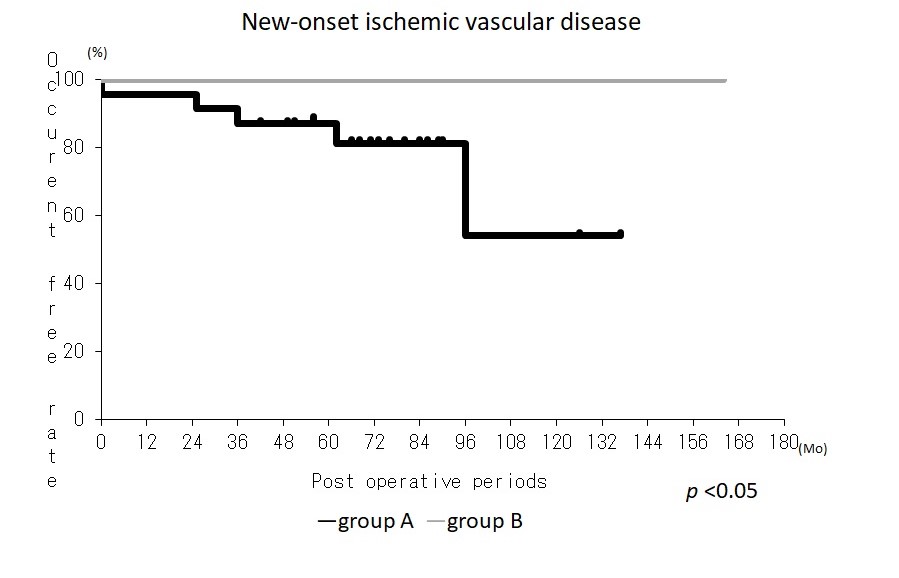The Impact of Increased Visceral Fat in Kidney Transplant Recipients
Y. Miyauchi, T. Noda, N. Miura, T. Kikugawa, T. Saika
Ehime University, Toon, Japan
Meeting: 2020 American Transplant Congress
Abstract number: C-037
Keywords: Kidney transplantation, Metabolic complications, Obesity, Vascular disease
Session Information
Session Name: Poster Session C: Kidney: Cardiovascular and Metabolic Complications
Session Type: Poster Session
Date: Saturday, May 30, 2020
Session Time: 3:15pm-4:00pm
 Presentation Time: 3:30pm-4:00pm
Presentation Time: 3:30pm-4:00pm
Location: Virtual
*Purpose: An increased amount of visceral fat (VF) has been reported as a precursor to metabolic syndrome and is a risk factor for renal dysfunction. It is also a risk factor for ischemic vascular conditions, such as cerebrovascular disorders and coronary artery disease. We aimed to examine the clinical outcomes, such as renal dysfunction and ischemic vascular disease, of renal transplant recipients with increased VF.
*Methods: A total of 50 recipients underwent CT scans every year for 3 years. The VF area at the umbilical level was measured by CT volumetry, the results of which showed 23 cases (Group A) having a VF increase of 30% or more after 3 years, and 27 cases (Group B) having a VF increase of less than 30%, as compared to the VF area before transplantation. We used CT volumetry to measure the patients’ body composition and compare the changes over a 3-year period. We also examined the graft function and the onset of ischemic vascular diseases, such as cerebral ischemic disease and ischemic heart disease.
*Results: There were no significant differences in age, sex, or pre-transplant body mass index (BMI). The dialysis periods were significantly longer in group A (p <0.01), and there were significantly more pre-emptive kidney transplant cases in group B (p <0.01). There were 4 patients in group B who withdrew from steroid treatment in the 3-year duration. The preoperative VF area was significantly smaller in group A than in group B, but there was no significant difference after 3 years. The increase rate of VF in 3 years was approximately 80% in group A, which was significantly different from the -0.6% VF increase in group B (p<0.001). There was no significant difference between the two groups with regards to the psoas muscle index at the 3rd lumbar spine (L3) level (L3PMI), which has been reported to be an indicator of total-body skeletal muscle mass. However, after 3 years, the L3PMI in both groups was significantly lower than before transplantation. There were no significant differences between the two groups in terms of graft function and graft survival. There was a significantly higher occurrence of new-onset ischemic vascular disease in group A, while there were no new-onset cases in group B (p<0.05).
*Conclusions: Even in patients who have received kidney transplants, increased visceral fat is a risk factor for ischemic vascular disease. Therefore, we recommend that these patients receive proper exercise and dietary guidance to maintain their health.
To cite this abstract in AMA style:
Miyauchi Y, Noda T, Miura N, Kikugawa T, Saika T. The Impact of Increased Visceral Fat in Kidney Transplant Recipients [abstract]. Am J Transplant. 2020; 20 (suppl 3). https://atcmeetingabstracts.com/abstract/the-impact-of-increased-visceral-fat-in-kidney-transplant-recipients/. Accessed July 14, 2025.« Back to 2020 American Transplant Congress

